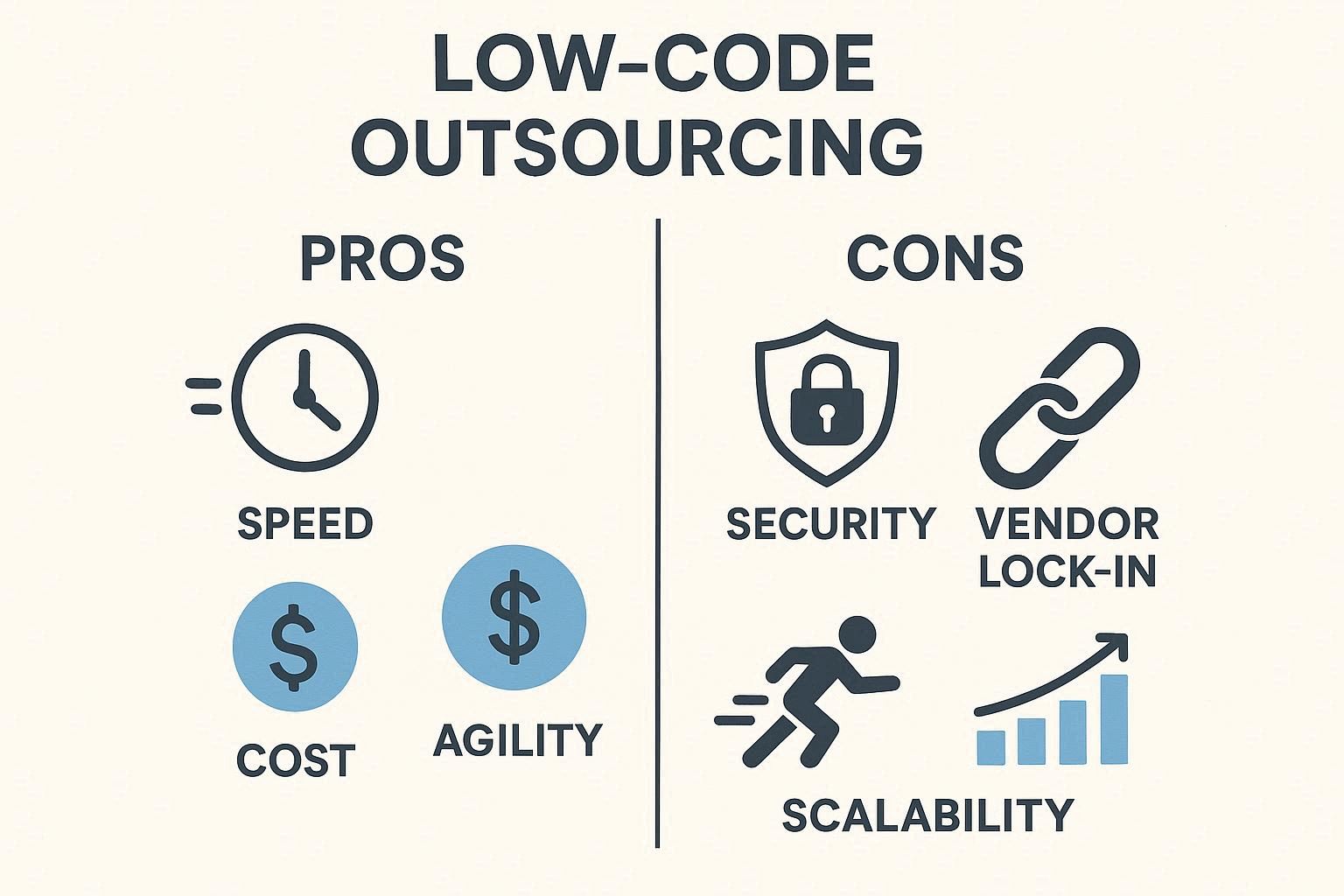The Future of Low-Code Outsourcing: Faster, Cheaper, Riskier?
- 1 min read
Discover the future of low-code outsourcing—how it promises speed and cost savings, but also raises risks in security, quality, and scalability.

Introduction
Low-code platforms are reshaping how organizations build and scale software. By outsourcing low-code development, companies gain faster delivery and cost savings—but not without challenges. This article explores the benefits, risks, and the future outlook of low-code outsourcing.
Why Companies Turn to Low-Code Outsourcing
- Demand for faster digital transformation with limited budgets.
- Access to global developer talent skilled in low-code tools.
- Ability to quickly prototype and scale applications.
- Reference: ISO/IEC 27001

How Low-Code Outsourcing Works in Practice
- Partnering with external teams specializing in low-code platforms like Mendix, OutSystems, or PowerApps.
- Using visual development environments to accelerate application delivery.
- Integrating outsourced low-code apps with existing enterprise systems.
- Reference: NIST SSDF
Metrics to Measure Low-Code Outsourcing Success
- Time-to-Market — Faster delivery of business-critical apps.
- Cost Savings — Lower development costs compared to traditional coding.
- App Scalability — Ability to handle growing business demands.
- Security Compliance — Adherence to standards like GDPR and ISO.
Risks & Mitigations in Low-Code Outsourcing
- Risk: Vendor lock-in with proprietary low-code tools → Mitigation: Prioritize platforms with open standards.
- Risk: Security vulnerabilities in outsourced applications → Mitigation: Align with OWASP Top 10.
- Risk: Hidden costs of customization and integration → Mitigation: Conduct upfront cost analysis and governance planning.
- Risk: Limited scalability for complex applications → Mitigation: Use low-code for MVPs, then transition to full-code where needed.

Key Takeaways
- Low-code outsourcing accelerates digital projects but requires careful risk management.
- Speed and cost benefits are clear, yet quality and scalability can be compromised.
- A balanced approach—combining low-code with traditional development—offers the best results.
Author: Matt Borekci
Contact Us: Euro IT Sourcing

What Is ICT Outsourcing? A Beginner's Guide
Discover what ICT outsourcing is, how it works, and why it’s essential for modern businesses. Learn the benefits, trends, and practical steps in this beginner’s guide.

The ROI of IT Outsourcing: Measuring Cost Savings, Efficiency & Value
Discover how to calculate the ROI of IT outsourcing, including cost savings, efficiency gains, and long-term value for sustainable growth.